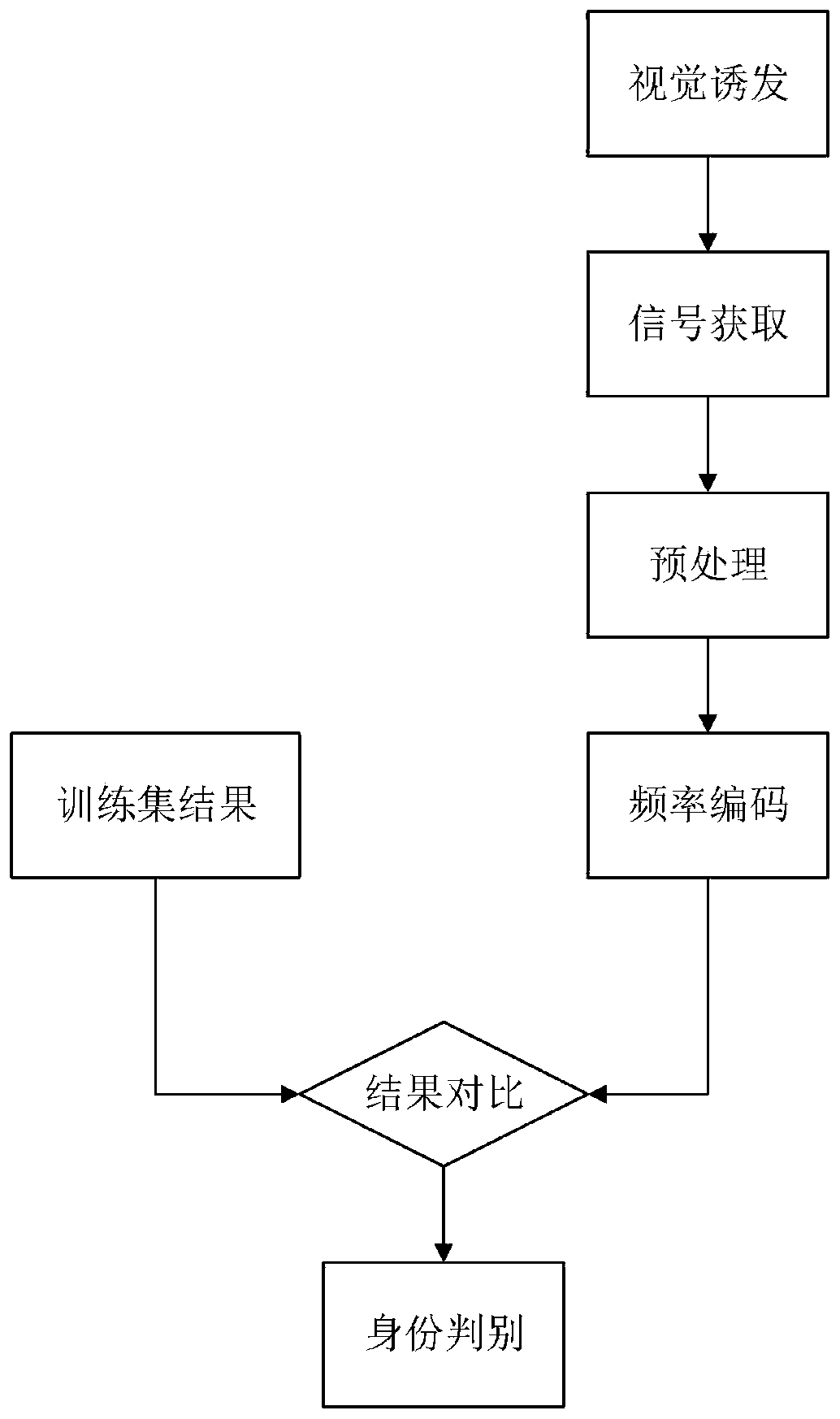A steady-state visual evoked electroencephalogram identity recognition method and system based on frequency domain coding
A technology of steady-state visual induction and frequency-domain coding, which is applied in the field of identity information identification, can solve problems such as low signal-to-noise ratio of EEG signals, large amount of calculation of EEG signals, and indistinct features
- Summary
- Abstract
- Description
- Claims
- Application Information
AI Technical Summary
Problems solved by technology
Method used
Image
Examples
specific Embodiment 2
[0102] S1: System information entry: The person who needs to enter information wears an electrode cap, sits on a chair and looks at the monitor 1m away from him, and collects the person's EEG signal.
[0103] S2: Process the collected EEG signals with a frequency-domain coding-based steady-state visually evoked EEG identification method.
[0104] S3: Input the processed EEG signal into a frequency-domain coding-based steady-state visually evoked EEG identification method and system.
[0105] S4: The authenticated person wears an electrode cap, sits on a chair and looks at the monitor 1m away from him, and collects the person's EEG signal.
[0106] S5: Process the collected EEG signals with a frequency-domain coding-based steady-state visually evoked EEG identification method.
[0107] S6: Comparing the encoded EEG signal with the existing codes stored in the frequency-domain coding-based steady-state visually evoked EEG identification method and system to find the identity in...
PUM
 Login to View More
Login to View More Abstract
Description
Claims
Application Information
 Login to View More
Login to View More - R&D
- Intellectual Property
- Life Sciences
- Materials
- Tech Scout
- Unparalleled Data Quality
- Higher Quality Content
- 60% Fewer Hallucinations
Browse by: Latest US Patents, China's latest patents, Technical Efficacy Thesaurus, Application Domain, Technology Topic, Popular Technical Reports.
© 2025 PatSnap. All rights reserved.Legal|Privacy policy|Modern Slavery Act Transparency Statement|Sitemap|About US| Contact US: help@patsnap.com



